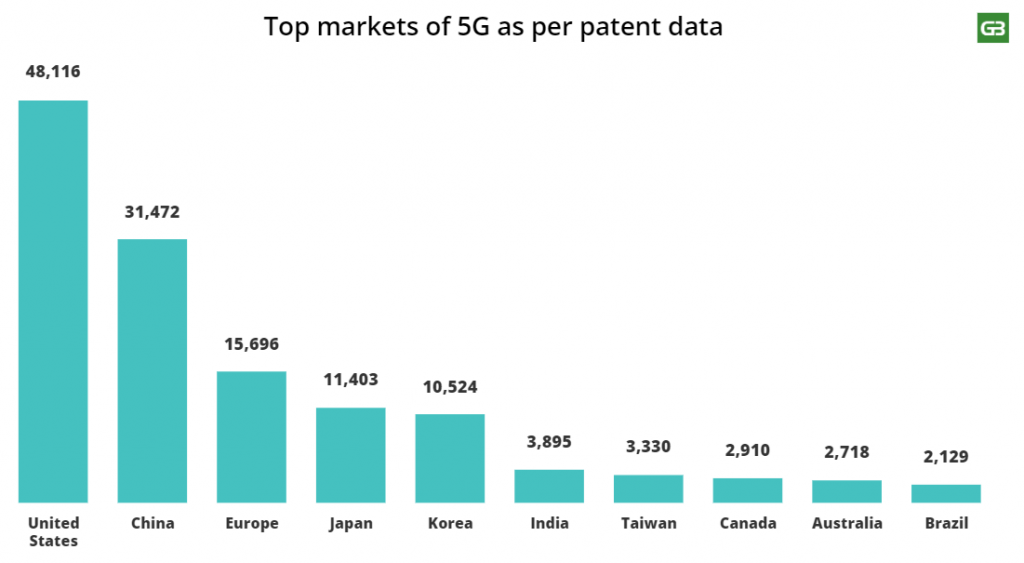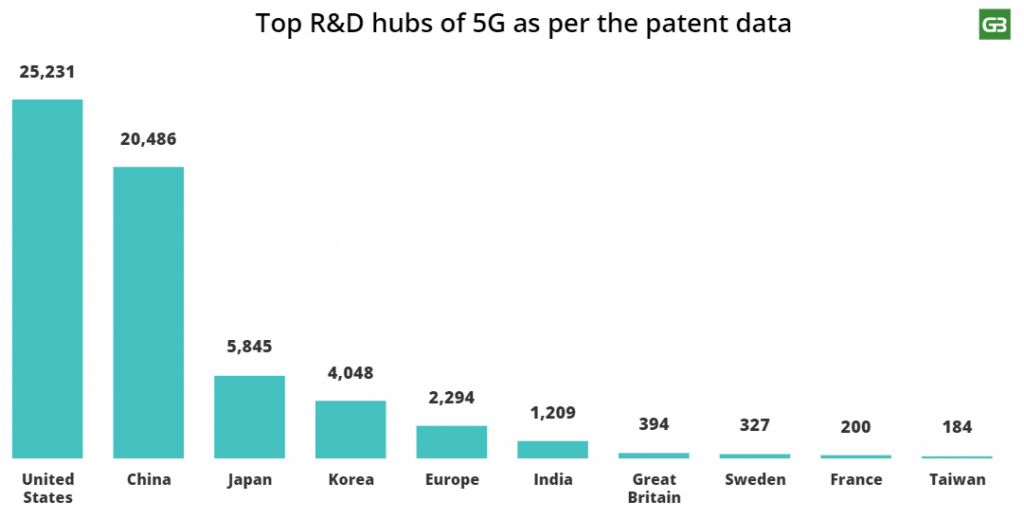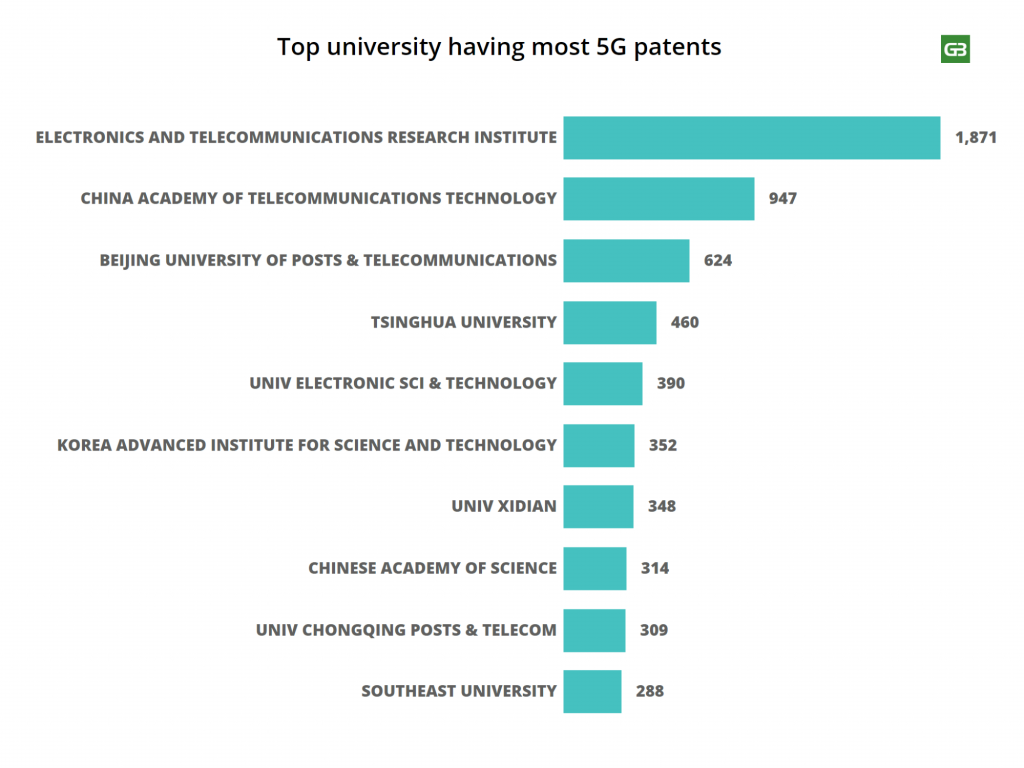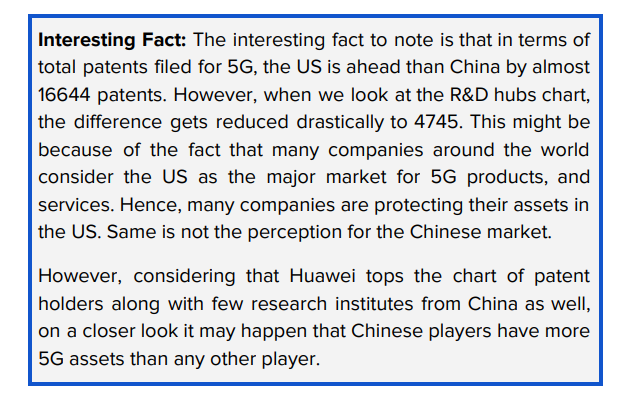Introduction addendum
In this study, we aimed to identify top players in the 5G technology (NOT 5G SEP, NOT Core SEP) and countries which are flag-bearers for innovating this technology. The intent was to share this knowledge through our blog making people aware of the progress made in the industry so far.
It was an automated analysis and no manual filtering of the patents was done. For the purpose of data collection, we collated a list of top 5G enabling technologies (such as New Radio, SDN, NFV, Beamforming, etc.), relevant key terms, and broad classes related to telecom concepts. We formulated custom search logics based on a combination of identified key terms, concepts, and classes. We ran these search logics on Derwent Innovation (patent database) which yielded a patent set of around 60K unique patent families which would broadly consist of all 5G related patents.
Thus, the numbers mentioned in this article represent only 5G patents (NOT 5G SEP, NOT Core SEP). There is no direct correlation with standard-essential patents which are declared by the companies to ETSI or other standard bodies.
Further, we have recently published a report on 5G essential patents where we performed a manual analysis on the 5G SEPs declared to ETSI by March 2019. In this study, we did a thorough analysis of each of the declared 5G patents (having granted and alive status as of December 31, 2019) to confirm its essentiality with 5G specifications (more than 500 specs were considered). The declared patents which we found to be overlapping with 5G specs were considered as core SEPs. We have shared our initial findings in the report. Read it from here –
For geographical distribution, we pulled two kinds of datasets.
The first dataset will provide the information of the major R&D hubs of 5G technology as per the patent count.
Similarly, the second dataset will provide information on the major markets for the 5G technology as per the patent count.
Top Markets

The chart represents the top markets for 5G technology as the assignees want to secure their inventions in these countries due to the high demand for 5G.
The above chart contains all the 5G patents possessed by a country whether or not it is first filed in that country. That is, 106143 is the total count of 5G related patents in the US, but many of these patents may have a different priority country than the US.
Top R&D Hubs

The above chart represents the top R&D hubs of 5G technology according to the patent data. The large patent count in the US and China is proof of the intense research going on in both countries.
The USA is in the top position on this chart as well but the number of patent counts is different than the above chart. The chart represents the priority country of a patent where its R&D happened. For example, 25,231 patents count means that these are homegrown US patents which makes it the priority country for all these patents, hence the US sits comfortably at the top.
The same is for China, it is a priority country of 20,486 patents as for all these patents, R&D took place in China.
As you can see, there is not much of a difference between the US and China and is proof of how these two countries are competing with each other to be the global leader in 5G technologies.
Universities with most 5G Patents
A total of 13 universities and research institutes made their presence in the list of top 100 5G patent holders.
Here the list of universities and research institutes researching on 5G:

An interesting insight is that 8 out of 10 universities are from China which makes the country one of the top hubs for 5G technology.
Electronics and Telecommunications Research Institute (ETRI) which tops the list of universities is the most popular research institute when it comes to telecommunication.
They are also the reason for some crucial 5G inventions. ETRI invented the Wi-Fi auto-steering technology which enables mobile users to shift from mobile network to WiFi depending on the connection quality and availability.
It also developed Giga WiFi technology which can provide the users to speed up to 1 Gbps even on the fast-riding cars and trains.
Similarly, other universities and research institutes have also been working on 5G technology publicly or privately.



